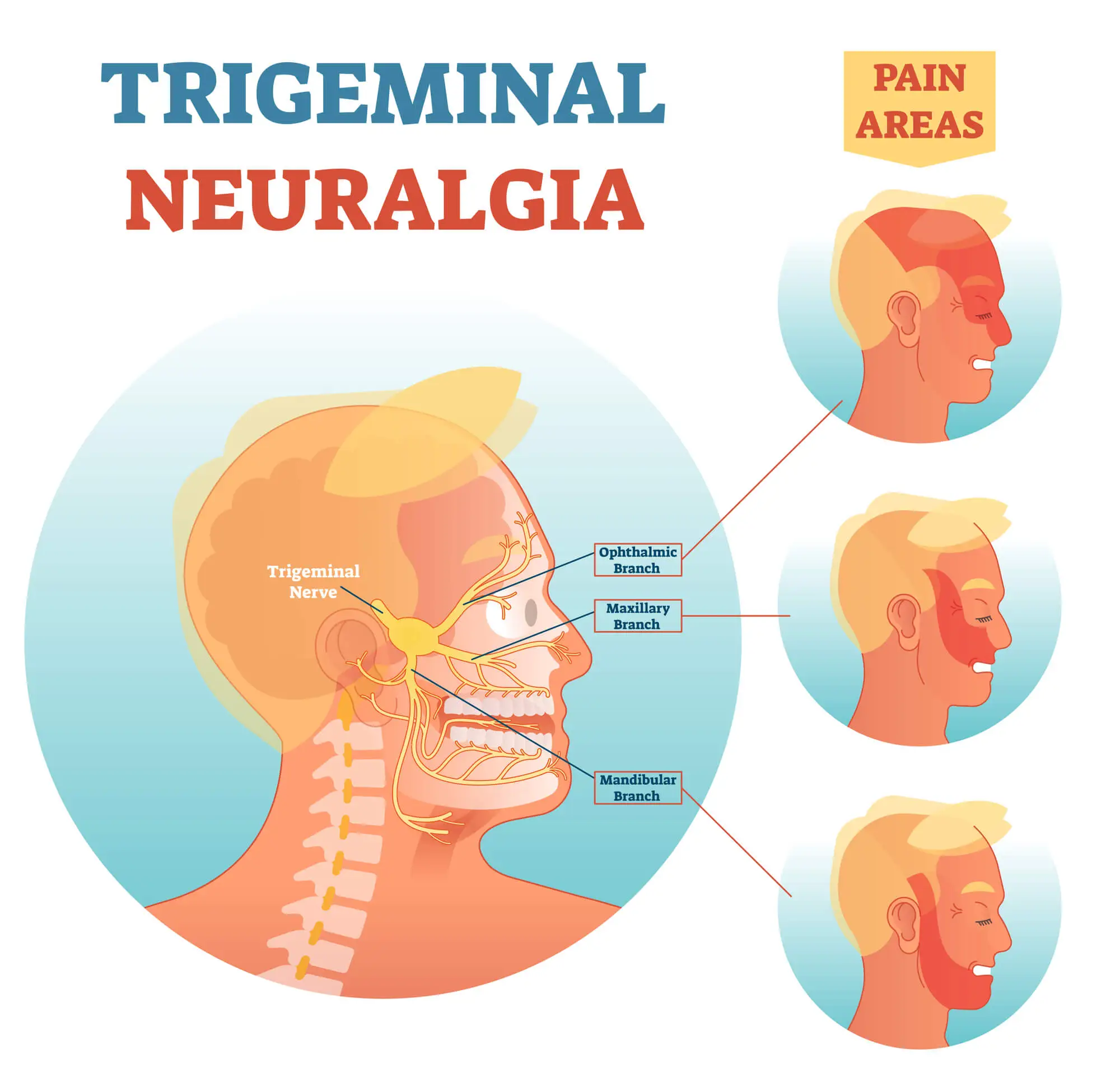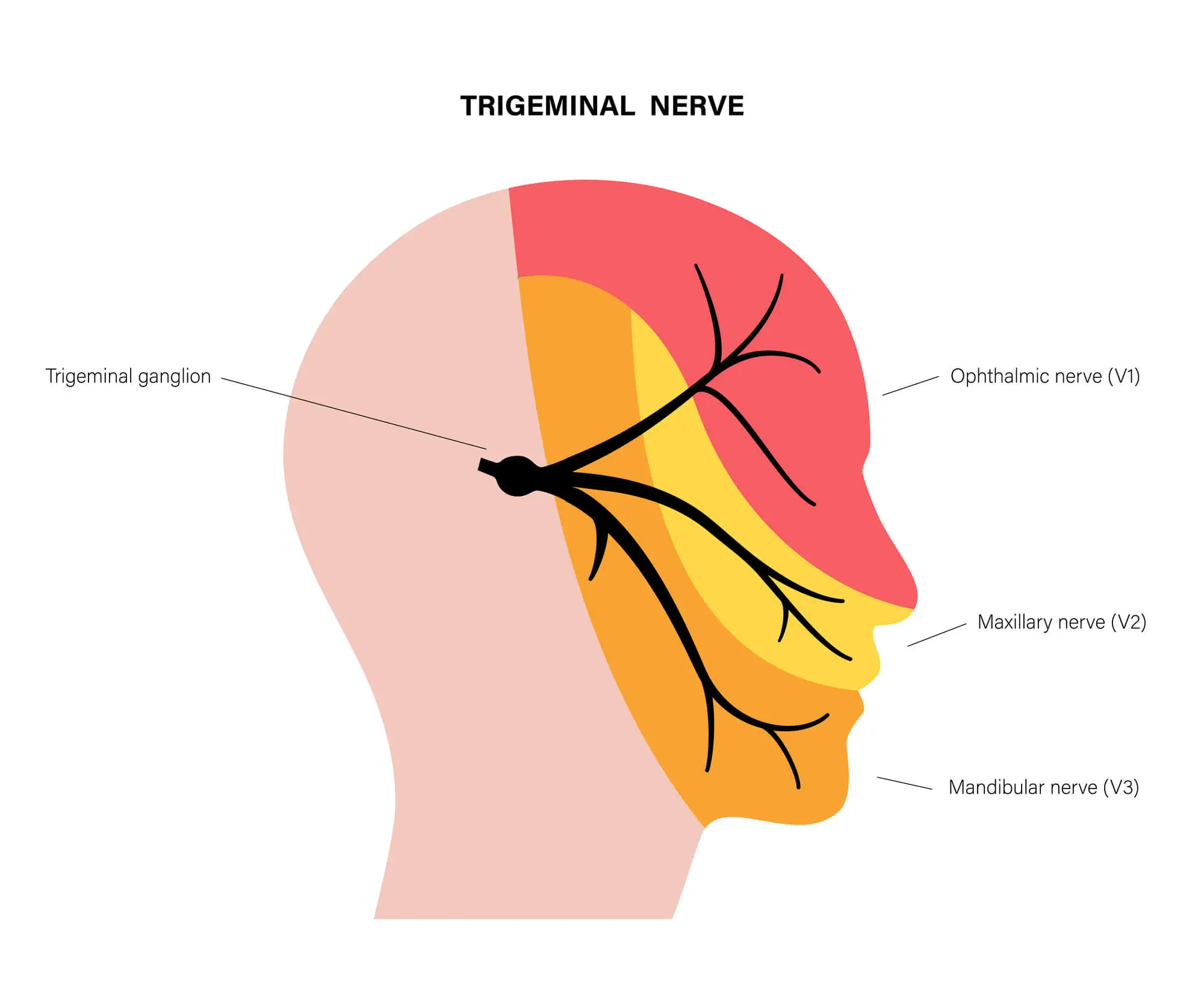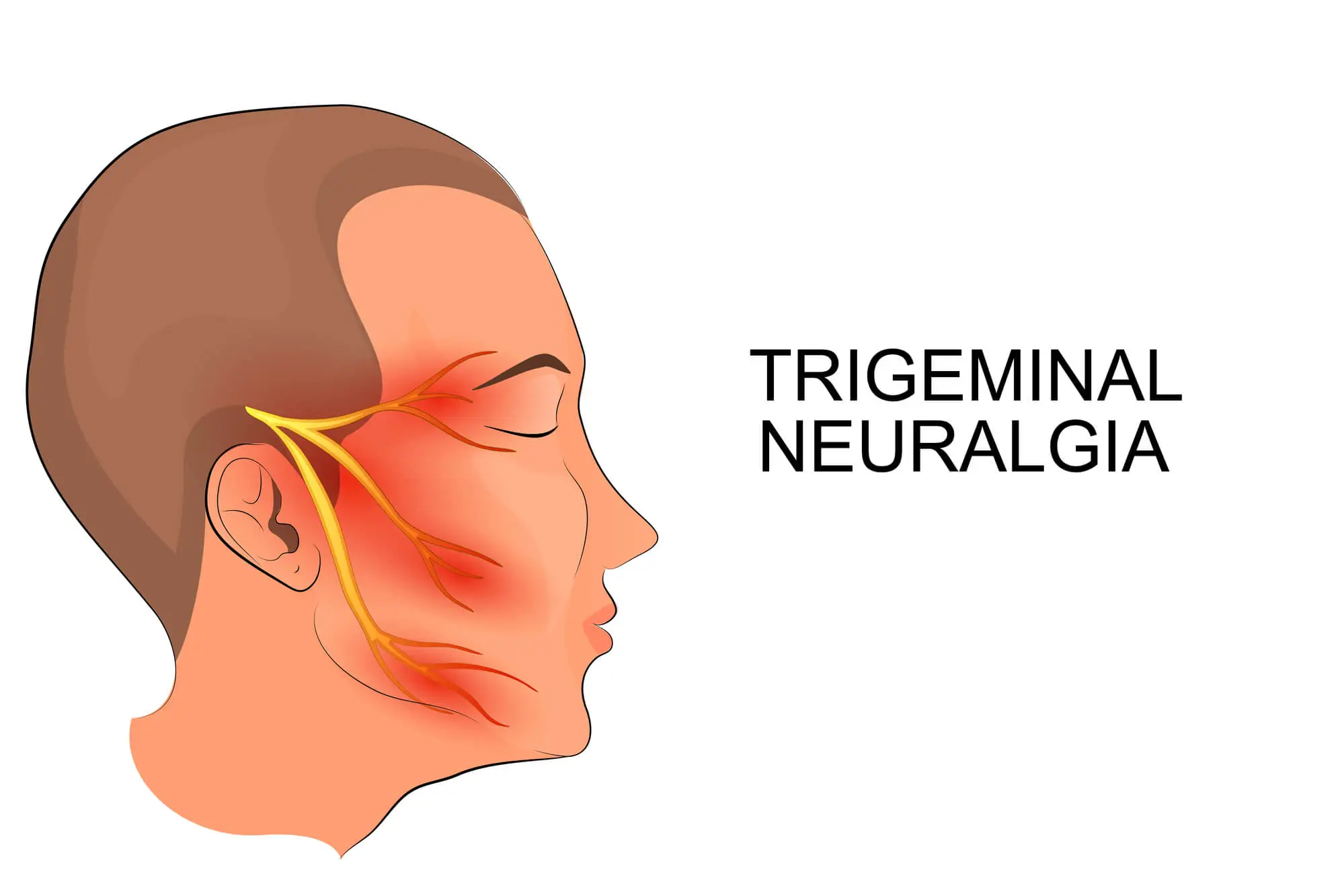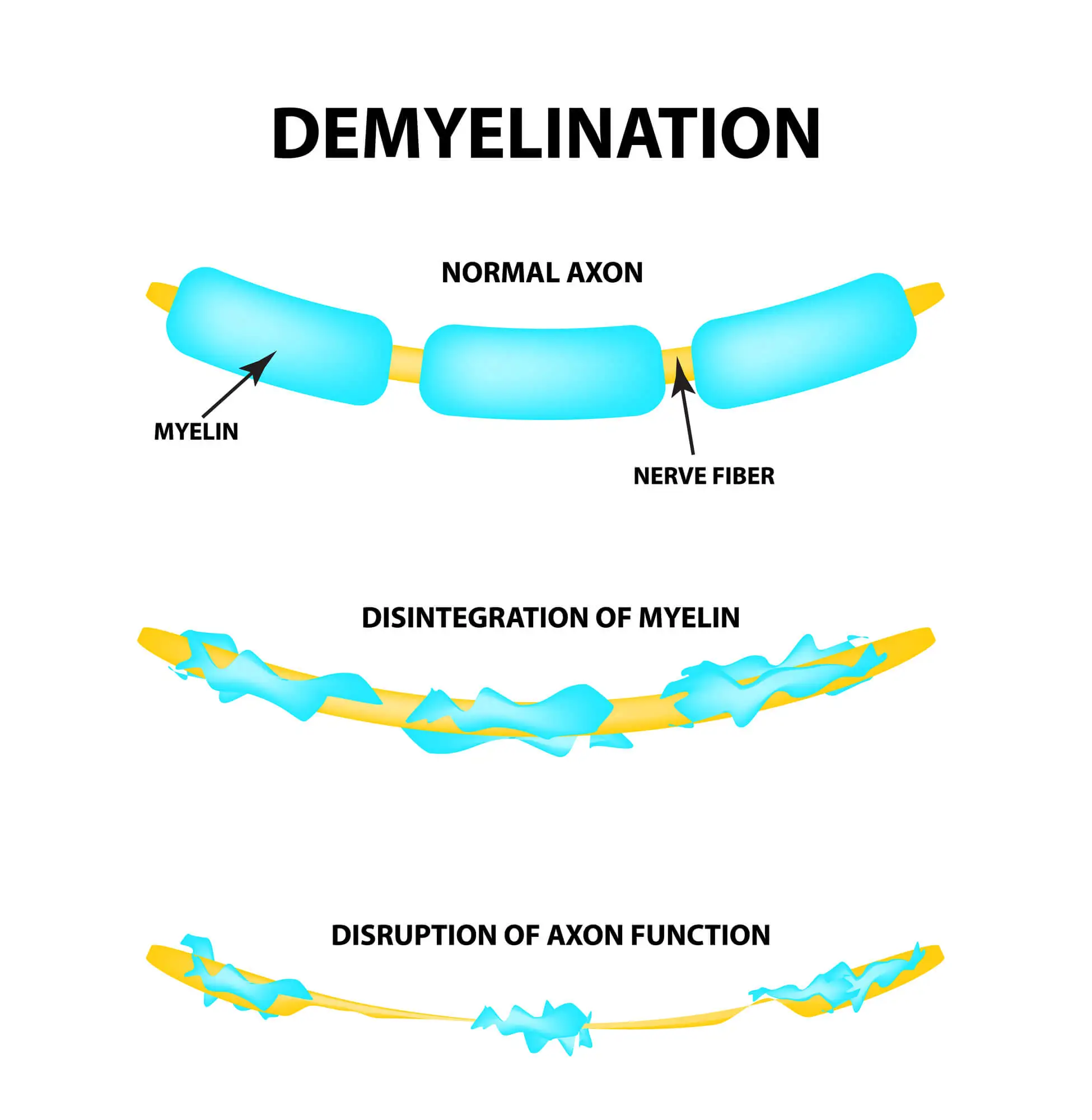If you suffer from trigeminal neuralgia, you are familiar with the excruciating pain that comes on suddenly, envelops your face, and disrupts your life. And, of course, it doesn’t help that flare-ups are often caused by the simplest of things, such as touching your face, brushing your hair, or kissing a loved one.
Trigeminal neuralgia isn’t considered to be life-threatening per se. But, given the number of patients attempting to take their life to put a stop to the pain, it isn’t surprising that this condition is also known as “suicide disease”.
Fortunately, relying on often ineffective pain medications or undergoing invasive surgical procedures are no longer the only options to manage your pain. Learn about our trigeminal neuralgia treatment options. Thanks to RELATYV Mobile Pain Management whole-person approach, you can address the triggers of flare-ups, ease painful sensations, and gain your life back – without drugs or surgery. Let’s see how below.
What Is Trigeminal Neuralgia?
Also known as tic douloureux (painful tic), Trigeminal neuralgia (TN) is a chronic, lifelong condition that causes agonizing pain. The painful episodes usually focalize on one side of the face, develop in a matter of seconds, and can disrupt your daily life.
The pain stems from a problem with the trigeminal nerve, which is a set of cranial nerves starting from the top of the ear and splitting off across the side of the face. Although you have two trigeminal nerves – one for each side of the face – TN usually affects only one of these nerves.
In people with TN, the dysfunction of the trigeminal nerve often occurs due to a blood vessel pressing on and damaging the nerve. However, this condition may also have other causes, such as tumors, surgical injuries, facial trauma, or multiple sclerosis.
The pain deriving from this disease is often described as an electric shock-like, stabbing sensation, so intense that it can prevent you from drinking, eating, smiling, or speaking.

The Prevalence, Incidence, and Impact of Trigeminal Neuralgia
Trigeminal neuralgia is considered to be a rare disorder, affecting around 5.5 people in a population of 100,000. Only around 15,000 new cases of TN are registered every year in the US, and women – especially those aged 50 and over – are twice as likely as men to suffer from it.
But while rare, this condition can be extremely severe. The painful episodes it causes are unpredictable and agonizing, which can lead to mental and physical distress. What’s more, currently, there is no definitive cure for TN. Surgical interventions may help suppress symptoms temporarily, while medications can help relieve pain.
Because of the lack of a cure and extremely painful sensations, trigeminal neuralgia may push people toward attempting suicide. In a 2018 study, TN accounted for 26% of all attempted suicides in people with chronic headache disorders.
Fortunately, for today’s patients, there is hope to find an efficient treatment option that does not involve medications or surgery.
Anatomy And Physiology Of The Trigeminal Nerve
As seen above, trigeminal neuralgia is a condition deriving from disruptions in the functioning of the trigeminal nerve. This can happen when a blood vessel gets into contact with – and presses on – the nerve, but other conditions can also cause damage to the trigeminal nerve.
To understand how TN relates to trigeminal nerve damage, let’s first look at the function and anatomy of this nerve.
The Function Of The Trigeminal Nerve
The trigeminal nerve is one of the 12 pairs of nerves that stem from the brain and spread across the body. These nerves are responsible for transmitting signals to the brain related to sensations, pain, touch, vibration, muscle movements, and bodily functions such as heartbeat and digestion. These signals are then processed by the brain, a process that enables you to move your muscles and experience sensations in response to stimuli.
In particular, the trigeminal nerve branches out into the face and is responsible for transmitting pain, touch, and temperature sensations from your face to the brain.
Trigeminal Nerve Branches
There are two trigeminal nerves, one located on each side of the face. Each nerve starts on top of the ear and then splits off into three branches:
- The ophthalmic branch: This is the upper branch of the trigeminal nerve. It spreads across the scalp and forehead, and it transmits signals to the brain relating to the upper portion of your head.
- The maxillary branch: This branch of the trigeminal nerve connects the middle portion of your face to the brain, including the cheek, upper jaw, nostrils, and upper lip.
- The mandibular branch: The lower branch of the trigeminal nerve supplies nerve endings in the lower jaw area, bottom lip, teeth, and gums.

Role In Facial Sensation
The trigeminal nerve carries sensations from the different parts of the face to the brain. This connection can be interrupted due to nerve damage, which may occur if the trigeminal nerve is compressed, irritated, or inflamed.
When this nerve is damaged, it can misfire, causing you to experience sudden electric shock-like sensations. The jolt of pain may also be triggered by stimuli that should be painless, such as brushing your hair, touching your face, or putting on makeup.
Although it may feel like the pain caused by TN envelops a whole side of your face, it tends to focalize around the area where one of the nerve branches is irritated or damaged. The intensity of the pain caused by trigeminal neuralgia is reported to be worse than experiencing a heart attack or giving birth.
Types of Trigeminal Neuralgia
Trigeminal neuralgia has one constant: causing excruciating pain. However, the intensity, pattern, frequency, and location of flare-ups may vary from one person to another.
In most cases, painful sensations occur in intermittent bouts and are characterized by stabbing sensations. However, some people experience constant aching or burning pain.
Depending on your symptoms, your condition may be classified as classic trigeminal neuralgia or atypical trigeminal neuralgia. Let’s look at these variations of TN below.
Type 1: Classic Trigeminal Neuralgia
Also known as “classic”, Type 1 trigeminal neuralgia is the most common form of TN. If you have this condition, you’ll experience painful episodes characterized by sharp and burning sensations on one side of your face.
These episodes start with mild numbness and tingling and achieve full intensity in a matter of seconds. Each burst of pain can last between a few seconds and two minutes before easing off.
The bouts of pain usually occur very close together and are followed by brief pain-free periods. They can continue intermittently for up to two hours, but some people experience hundreds of attacks a day. After a flare-up, you may enjoy a period of remission, during which you don’t experience pain for months or years. The periods of remission tend to get shorter with time, and the pain always comes back.
A flare-up of trigeminal neuralgia can be triggered by contact with the cheek, vibration, or touch, which can occur when you are washing your face, eating, or drinking. The attacks rarely occur when you are sleeping.
Type 2: Atypical Trigeminal Neuralgia
Atypical – or Type 2 – trigeminal neuralgia is far less common than Classic TN. This form of trigeminal neuralgia causes painful sensations that may be less intense, but also more widespread and constant. People with atypical TN often describe their pain as stabbing, burning, aching, or dull, and they tend to have more difficulty managing their symptoms.
While the pain deriving from Type 2 TN isn’t as excruciating as the one resulting from Type 1 trigeminal neuralgia, it can be just as life-limiting, especially as attacks progress and worsen over time. Additionally, with time, the periods of remission tend to be fewer and shorter, and medications become less effective in controlling the pain.
To complicate the clinical picture of someone with Type 2 trigeminal neuralgia is the fact that the symptoms of this condition overlap with the ones of other diseases, such as temporomandibular joint (TMJ) disorders, craniocervical instability (CCI), and Transverse Cervical Nerve (TCN). This often leads to misdiagnosis and inadequate treatment.
Characteristics Of Trigeminal Neuralgia Pain
Trigeminal neuralgia pain can vary from one person to another, but there are some similarities. Firstly, the pain caused by this condition is known to be one of the most excruciating sensations known to humanity, often described as being worse than giving birth or suffering a heart attack.
Additionally, the attacks tend to follow a similar pattern, which has the following characteristics:
- During an attack, the shock-like sensations occur very close to each other, each of which will last between a few seconds and two minutes.
- Attacks with intermittent bouts of pain can last 2 hours or longer. Attacks also tend to last longer and become more intense as the damage to the trigeminal nerve progresses.
- The periods of remission can last between a few weeks and a few years. However, trigeminal neuralgia never disappears on its own, and the pain-free periods tend to become shorter with time.
- Trigeminal neuralgia pain occurs in one side of the face. In nearly 60% of cases, the right side of the face is affected. Bilateral neuralgia can also occur, but it is very rare.
Working with a specialist can help you better understand the patterns and characteristics of trigeminal neuralgia pain.
Symptoms Of Trigeminal Neuralgia
Although pain is certainly the most prominent symptom of trigeminal neuralgia, the painful sensations this condition causes can vary from one person to another. If you have TN, here are some of the most common symptoms you’ll experience:
- Sudden, Severe, Electric Shock-Like Or Stabbing Pain: A damaged trigeminal nerve tends to misfire and send inappropriate pain signals to the brain, which translate into electric shock-like sensations across one side of the face.
- Pain Felt On One Side Of The Face: In trigeminal neuralgia, the pain will be localized on the side of the face where nerve damage or irritation occurred. In particular, if a specific branch of the trigeminal nerve is affected, you may experience pain in the upper, middle, or lower portion of the face. Damage to the mandibular (lower) branch of the trigeminal nerve is the most common form of TN.
- Pain Triggered By Actions Such As Chewing, Talking, Or Brushing Teeth: Nerve damage can cause you to experience painful sensations in response to stimuli that should otherwise be painless. In trigeminal neuralgia, an irritated trigeminal nerve can fire up in response to mild sensations, such as brushing your teeth, shaving, applying makeup, or even touching a lip with your tongue.
- Pain That Occurs In Bursts Or Episodes: especially if you have Type 1 trigeminal neuralgia, the painful sensations will be concentrated in intense and intermittent bursts of pain.
- Intense, Sharp, Or Shooting Pain: Whether you have trigeminal neuralgia type 1 or 2, the pain will manifest itself as intense and sharp, stabbing, or shooting. Over time, the painful sensations can last for up to 2 minutes before easing down.
- Pain That Spread To Other Areas Of The Face: Painful sensations are often concentrated on one side of the face, depending on which trigeminal nerve (or a branch of) has been damaged. Trigeminal neuralgia can also occur on both sides of the face, and the pain can spread to your eyes, mouth, nose, scalp, and forehead.
- Pain Accompanied By Involuntary Twitching, Grimacing, Or Wincing Of The Face Or Mouth: Damage to the trigeminal nerve can also inhibit moto signals traveling to the brain, which are the signals that relate to muscle movement. This can cause involuntary muscle movements such as twitches, spasms, and cramps.
- Numbness Or Weakness: Although trigeminal neuralgia expresses itself with pain, nerve damage can also prevent pain and touch signals from reaching the brain. When this happens, you may experience numbness or weakness in several parts of your face.

Neck Pain
Neck pain is a common issue that can affect people of all ages. You see, the neck is a complex structure encompassing the spine, spinal cord, and various supporting muscles, ligaments, and tendons. It’s unsurprising, then, that there is a wide range of...
Neuralgia
The nerves across our bodies enable muscle movement, control essential functions, and process touch and temperature sensations. Ultimately, they play a vital role in helping us experience the world around...
Causes Of Trigeminal Neuralgia
Trigeminal neuralgia is a condition caused by the abnormal functioning of the trigeminal nerve. This dysfunction can occur from nerve damage, irritation, or compression, but it can also be idiopathic (without a known cause) in some cases.
Below, we’ll look at what can trigger trigeminal neuralgia:
- Compression of The Trigeminal Nerve: Usually, the trigeminal nerve becomes compressed when a nearby blood vessel – artery or vein – that runs nearby gets into contact with the nerve. This contact presses on and irritates the nerve, damaging the myelin – or the nerve’s outer protective sheath. Vascular compression is the most common cause of trigeminal neuralgia, but pressure on the trigeminal nerve can also be caused by abnormalities such as a tumor.
- Multiple Sclerosis: Other conditions, such as MS can cause the demyelination (damage to the myelin) of the trigeminal nerve. Studies have shown that 15% of people affected by trigeminal neuralgia are then diagnosed with MS, while up to 3.4% of people with multiple sclerosis have TN.

- Injury or Trauma: Surgical injury (often following oral or sinus surgery), or facial trauma can damage the trigeminal nerve, thus leading to TN. The symptoms of TN caused by injury or trauma are similar to the ones caused by dental problems, and people with undiagnosed trigeminal neuralgia often undergo several dental procedures to attempt to address the pain.
- Genetics: 1-2% of trigeminal neuralgia cases have inherited or genetic factors. Although the relationship between genetics and TN is unclear, having someone in your family with this condition may increase your risk of suffering from it.
- Other Medical Conditions: Stroke and brain lesions may damage the trigeminal nerve or lead to pain that is similar to the one caused by trigeminal neuralgia. New research is also exploring whether nerve damage caused by shingles may also be related to trigeminal neuralgia.
After the onset of symptoms, trigeminal neuralgia becomes a lifelong, chronic condition. Although you may experience pain-free periods of remission, a new attack can be caused by one of several triggers, including the following:
- Experiencing a light breeze or gust of wind on your face
- Touching your face
- Eating or drinking
- Talking or smiling
- Brushing your teeth or touching your teeth with your lips
- Pressing on your cheek or jaw line
These triggers may change over time. However, understanding what triggered a previous attack may help you prolong a period of remission.
Risk Factors Of Trigeminal Neuralgia
Although anyone can experience trigeminal neuralgia, some factors may increase your risk of suffering from it. These include:
- Age: The aging process causes a decline in the health and function of the nervous system, making trigeminal neuralgia and nerve damage more likely. This condition mostly develops in adults between 37 and 67 years old.
- Gender: Women are twice as likely as men to suffer from TN.
- Excessive dental procedure: Invasive or improper dental procedures can damage the trigeminal nerve.
- Cardiovascular disease: If you have high blood pressure or you have suffered a stroke, it is more likely for the trigeminal nerve to be compressed by a blood vessel or damaged.
- Playing contact sports: Engaging in activities that increase the chances of facial trauma can increase your risk of suffering from trigeminal neuralgia later in life.
Tests and Procedures in Diagnosing Trigeminal Neuralgia
Although there is no definitive diagnostic procedure for trigeminal neuralgia, a neurologist or healthcare specialist will be able to determine what is causing your facial pain. However, because of the overlapping of symptoms with other conditions, atypical TN is more difficult to identify and sometimes misdiagnosed.
Diagnosing trigeminal neuralgia involves the following steps:
- Medical History and Physical Examination: Your doctor will review the nature and pattern of your symptoms, assess your medical history, and carry out a physical examination of your face to exclude other underlying conditions.
- Neurological Examination: During a neurological exam, a specialist will evaluate your mental health, muscle strength, and reflexes. A doctor will also check for nerve abnormalities by testing for sensation on the face, checking your hearing and vision, and observing how you move your eyes, mouth, neck, and shoulders.
- Imaging Studies: Computerized tomography (CT) and high-resolution magnetic resonance imaging (MRI) tests are used to obtain a clear picture of the anatomy of the trigeminal nerve. Through these scans, your doctor will be able to identify abnormalities such as a tumor or blood vessels that may be compressing the nerve. These tests can also be used to diagnose the underlying conditions behind trigeminal neuralgia pain, such as Multiple Sclerosis.
- Electrophysiological Tests: These tests are used to evaluate the health of your body’s electrical system.
Common Treatment Options for Trigeminal Neuralgia
As seen above, trigeminal neuralgia is a lifelong condition for which there is no definitive cure. However, healthcare professionals can prescribe several lines of treatment to ease the intensity of the pain, reduce the frequency of attacks, and prolong the periods of remission.
Prescription Medications
Commonly prescribed medications for TN include:
- Anti-seizure medications: Antiepileptic drugs may interfere with the transmission of pain signals sent by nerves that are damaged or overly sensitized, such as in the case of an irritated trigeminal nerve. This class of drugs is more efficient for Type 1 trigeminal neuralgia than for Type 2.
- Antidepressants: Antidepressants work by stimulating the activity of neurotransmitters in the spinal cord, which are responsible for reducing and modulating pain signals.
- Nerve blocks: These are injections of steroid medications that provide temporary relief from pain.
Gamma Knife Radiosurgery
If medications have not offered the desired results, your doctor may suggest undergoing a surgical procedure called stereotactic radiosurgery. This type of surgery uses a tool known as Gamma Knife or CyberKnife to create a lesion at the root of the trigeminal nerve using a concentrated amount of focused radiation.
This severs the connection between the trigeminal nerve and the brain, thus stopping you from feeling pain. This surgical intervention can ease trigeminal neuralgia pain for as long as three years but can worsen the sensations of numbness and weakness in the face.
When choosing a pharmacological treatment, it is important to keep in mind that trigeminal neuralgia is a progressive and chronic condition. This means that you may be taking medications daily for years to come, and the efficacy of these medications may decrease with time. This can expose you to severe side effects, including addiction.
Percutaneous Procedures
Percutaneous – or “through the skin” – surgical procedures are used to destroy some nerve fibers in the trigeminal nerve. This reduces pain for two years or longer, but it can also increase sensations of facial numbness.
These procedures are known as rhizotomy. There are several types of rhizotomy that can be used for trigeminal neuralgia, including:
- Balloon compression: In this procedure, a small tube is inserted through the cheek and guided to the trigeminal nerve. The tube is used to insert a catheter with a small balloon, which is then inflated. The pressure caused by the inflated balloon damages the nerve fibers that are causing pain.
- Glycerol injection: In this procedure, a small amount of sterile glycerol is inserted in the area of the trigeminal nerve where it splits into three branches. This substance selectively damages the nerve to relieve painful sensations.
- Radiofrequency thermal lesioning: This procedure selectively damages the area of the trigeminal nerve that is causing pain by briefly heating the nerve to 80°C.
Another surgical procedure used to treat trigeminal neuralgia is microvascular decompression. In this procedure, the blood vessels compressing the trigeminal nerve are removed or relocated. This is the most invasive surgical procedure for TN.
Alternative Therapies
According to a 2021 study, alternative and complementary therapies – when coupled with other therapies – can be beneficial in relieving TN pain and easing the intensity of attacks. Some of these therapies include yoga, meditation, biofeedback, aromatherapy, acupuncture, low-impact exercise, and creative visualization. These approaches relieve stress and trigger the production of pain-relieving hormones, such as endorphins.
RELATYV Mobile Pain Management
The fact that there is no cure for trigeminal neuralgia does not mean that you have to spend your life dealing with excruciating pain, enduring the side effects of medications, or living in fear of suffering another attack.
With RELATYV Mobile Pain Management, you can address all aspects that may be contributing to your condition, ease pain, and return to enjoying your life. And, you can do all this without surgery, medication, or chiropractic care.
The key pillars of a tailored RELATYV Mobile Pain Management protocol include:
Electroanalgesia
Electroanalgesia is a pain management technique that uses high-pulse electrical current to ease pain, boost blood circulation, improve mobility, and induce...
IV Therapy
IV nutritional therapy, or intravenous therapy, involves administering vital nutrients directly to the bloodstream through an IV. This type of treatment bypasses the digestive system, allowing for maximum absorption and utilization of nutrients by the...
Lifestyle Counseling
Lifestyle counseling is an approach to managing chronic pain that involves identifying, assessing, and modifying lifestyle factors contributing to an individual's pain. For example, lifestyle factors such as nutrition, physical activity, stress, sleep quality...
Breakthrough Trigeminal Neuralgia Pain With Us
If you are living with excruciating pain caused by trigeminal neuralgia, the chances are that you have a single, constant thought: finding an efficient treatment option that does not involve surgery or medications.
RELATYV Mobile Pain Management can help. Thanks to our innovative whole-person approach, you can ease the pain without drugs or invasive surgeries – and stop living in fear of suffering another agonizing attack.
Don't suffer in silence. Schedule a consultation today and take the first step towards managing your trigeminal neuralgia with us.




